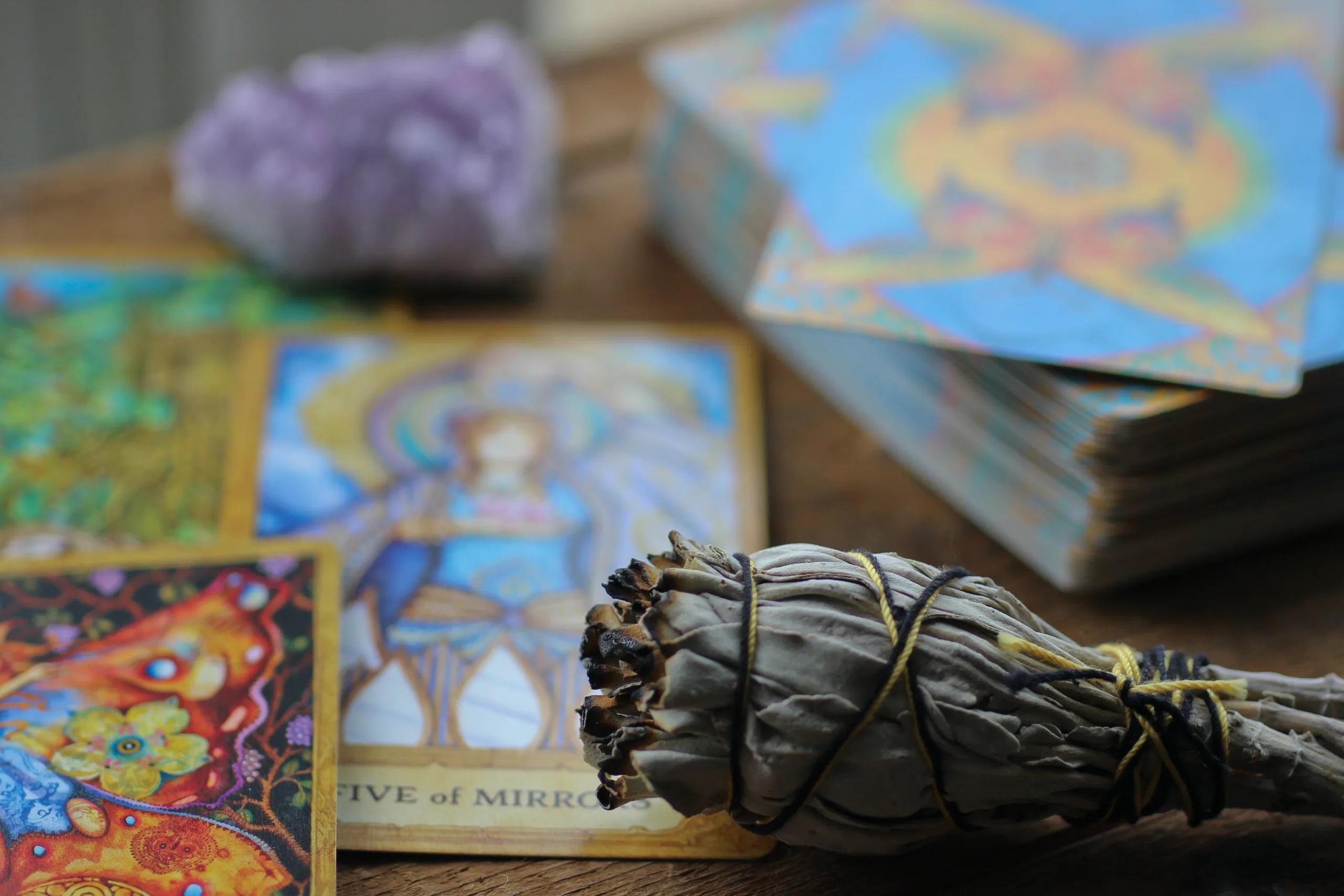Introduction to Tarot Reading
If you’re intrigued by the mystical world of tarot cards and curious about understanding the nuances behind a three-card tarot spread, you’re exactly where you need to be. How to read a three-card tarot spread is a question that often pops up in every novice tarot enthusiast’s mind.
 Image by Kayla Maurais. Source: Unsplash.
Image by Kayla Maurais. Source: Unsplash.
Brief History of Tarots
Delving into the history of tarot cards, this intriguing practice originated around the 15th century in Europe. Initially utilized for playing card games, the use of tarot cards for divination started somewhere around the 18th century.
Understanding the Basics of Tarot Cards
A basic tarot deck consists of 78 cards divided into Major Arcana (22 cards) and Minor Arcana (56 cards). Each card has a unique image, symbol, and meaning that can help understand different life aspects when drawn in a tarot card reading.
Significance of Three Card Tarot Spread
A three-card tarot spread simplifies tarot reading by offering clear, concise insights. It typically represents past, present, and future or mind, body, and spirit.
Components and Structure of a Three-Card Tarot Spread
Understanding the structure of a three-card tarot spread is vital for accurate readings.
Importance of Position in a Spread
Each card’s positioning within the spread carries massive significance. The first card stands for the past or the cause, the second represents the present or effect, and the third provides insights into the future or solution.
Role and Meaning of Each Card
Each card drawn has its defined role and meaning in relation to its position in the spread, contributing towards a complete story that can be interpreted by a skilled reader.
Step-by-step Guide to Reading a Three-Card Spread
Reading a three-card spread is an art that requires practice and understanding.
Preparing for the Reading: Mind-frame and Ambiance
Set the right mood with a quiet, serene ambiance. Your mind needs to be in a relaxed, receptive state for a tarot reading.
Shuffling and Drawing Your Cards
Shuffle your cards while focusing on the question or area of life you want insights on. Draw three cards from the top of the deck.
Understanding tha Past, Present, Future Layout
The first card represents past influences, the second symbolizes current situations, and the third forecasts future possibilities.
Interpreting Your Cards
Interpret your cards based on their inherent meanings and positions. Connect the dots between these individual interpretations to form a holistic view of your situation.
Common Misinterpretations and Pitfalls in Reading a Three-Card Spread
While learning to read tarot, avoid these common pitfalls.
Misinterpreting Reversed Cards
Reversed or inverted cards don’t necessarily mean negativity or bad fortune. They can often symbolize a different perspective on the regular meaning of the card.
Mistaking Context for Meaning
Each card’s meaning can change depending on its position in the spread and its context with other cards.
Incorrectly Linking the Narratives Between Cards
Each card needs to be interpreted individually before relating them to each other for a rounded narrative.
FAQs:
Why does the order matter in a three-card tarot spread?
The order represents specific facets of time (past, present, future) or different aspects of an individual (mind, body, spirit). It lends structure and cohesiveness to the reading.
What’s the significance of inverted cards? How should they be interpreted?
Inverted cards signify blocked energy, delayed situations, or an alternate perspective on that card’s standard meaning.
What should I do if I receive conflicting information during my tarot reading?
Contradicting cards may signify complex situations with multiple aspects at play. Seek deeper introspection or revisit the question with a clearer focus.
Can each card have multiple meanings? If so, how can you determine what it intends to convey?
Each card indeed has multiple meanings influenced by the query, spread, position, and other cards in the reading.
Wrapping up on How to Read A Three Card Tarot Spread
Learning to read a three-card tarot spread can open up avenues for self-reflection, decision-making, and forward planning. Remember, tarot reading is more about intuition and personal interpretation than rigid rules. The more you practice, the more familiar you will become with the cards and their meanings, allowing for a more fulfilling tarot reading experience.